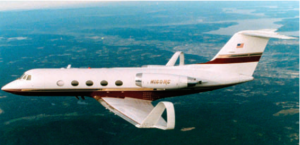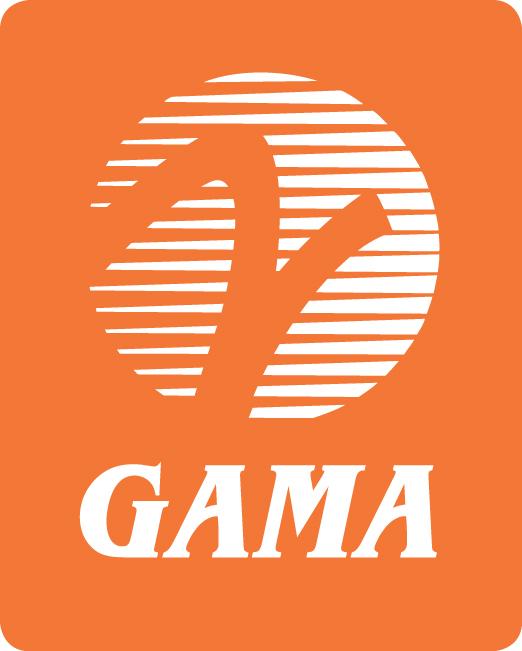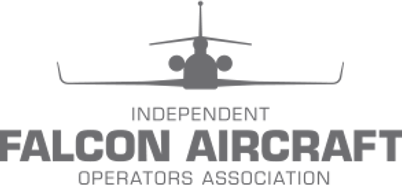
will allow, Aviation Partners’ winglets research has
succeeded in minimizing drag and improving
performance. The firm has introduced winglets for
the Raytheon Hawker 800 series and Boeing
Business Jet, and is said to be on the verge of
bringing the technology to other models as well.
New wingtip technology that “will raise eyebrows” is being developed by Aviation Partners and may be revealed at the EBACE show this week. Declining to reveal details ahead of time, chief executive Joe Clark told EBACE Convention News a few weeks ago that satisfactory completion of flight testing could permit him to announce the novel wingtip devices here in Geneva. The U.S. company also might identify two more business aircraft platforms for its established Blended Winglets which already are available to equip the Raytheon Hawker 800 series and the Boeing Business Jet (BBJ) and Boeing 737-700 and -800 jetliners.
The latest proposed modification has been derived from previous work on a “double-winglet, closed-loop design,” said Clark. Dubbed “spiroid winglets,” the technology was developed by former Boeing aerodynamics chief Dr. Louis Gratzer, who claimed it eliminates concentrated wingtip vortices, which account for nearly half of the induced drag generated during cruise.

“Vorticity is gradually shed from the trailing edge,” according to Gratzer. His patented SpiroidTipped-Wing introduces a substantial change in winglet design, which aims to control (or at least positively influence) the wake vortex flowing from a wingtip.
The spiroid looks like an extended wingtip that has been bent upward through 360 degrees (as if rolled inboard about a longitudinal axis) to form a large rigid loop. In 2001, Aviation Partners tested spiroid winglets on a Gulfstream II. The Seattle-based firm said the modification reduced cruise fuel consumption by more than 10 percent. At the time, it estimated that certification probably would take several years and suggested it could appear on transport aircraft by mid-decade.
Gratzer’s aim was to minimize drag and improve performance at all speeds. The vortex developed in the wake of a conventional wing generates a high crossstream velocity and lift-induced drag wastes energy. Since winglets reduce vortex strength, they also lower drag. Being a closed loop, the spiroid winglet was seen as the logical outgrowth of such technology.
According to Aviation Partners, to achieve minimum induced drag, which requires optimum aerodynamic surface loading, appropriately matched airfoils are essential for the twisted and cambered spiroid surface. And to minimize friction drag, the winglet’s chord distribution must be held to lower limits, while matching the loading and maintaining buffet margins.
The challenge for Aviation Partners has been to avoid going too far, since the resulting flexible structure could distort excessively under load–thereby causing performance loss or aerodynamic problems. Appropriate selection of an airfoil and location of the spiroid elements can circumvent the adverse high-speed effects associated with shock waves and flow separation.
Spiroids must be appropriately sized for the intended platform application, since additional weight and skin-friction drag–the price paid for lower induced drag–are related to geometry, structural load and design approach. Accordingly, there is an optimum spiroid geometry that will minimize drag without exceeding the structural capability of a given wing.
Aviation Partners says that normally this would reduce overall span, another apparent benefit. But if a wing has unused structural capability, ultimate drag benefits can be even greater–albeit with an increased span. According to the company, “There are many ways to exploit the tradeoff between drag, span, structural margins and wing weight, the designer’s role being to select the appropriate combination.”
The spiroid-equipped GII’s wake vortex was less intense than that of a standard GII, a factor that could allow shorter aircraft-separation distances in airport traffic patterns. The company says the spiroid development greatly expands the performance-enhancing potential of winglets on fixed-wing aircraft. As well as improved performance, the new technology could provide operational benefits, such as increased safety and less noise.
ACJ Winglets in the Cards
Any announcement here at EBACE 2006 of plans to certify current Aviation Partners winglet technology on additional business aircraft–the company is eyeing at least two types–could include corporate variants of the single-aisle A320 series. Clark confirmed that Aviation Partners has been approached by Airbus operators. “We would very much like to fly [our winglets] on the Airbus,” said Clark, who claims to have as many as 25 types on his “certification wish list” for future application.
Another aircraft family in Clark’s sights has been the Cessna Citation series. Although the bizjet builder has apparently ruled out modification of the Citation X, Aviation Partners is known to have considered the smaller “straight-wing” members of the Citation family. Clark also has cited the Dassault Falcon’s low-aspect-ratio wing as a candidate for winglets and the French manufacturer has tested such equipment.
Blended winglets have been installed on four corporate Boeing 757s (as well as those of Continental Airlines). In February, Aviation Partners said that–through its joint venture with Boeing–it was close to seeing 1,000 blended winglet-equipped private and commercial aircraft enter service.
At different times, the company reportedly has considered winglets for the Boeing 737-300, -400 and -500; 747-200 and -400; 767-300ER and 777- 200ER, and the McDonnell Douglas MD-80. At one stage Boeing investigated whether the 717 could be so equipped.
So successful has been Aviation Partners’ winglet application for the Raytheon Hawker 800 that Clark expects production to be raised by 50 percent next year. With recent sales running at “one a week,” he said 50 shipsets will be manufactured this year and 75 next year. Almost 40 sets of Hawker 800 winglets had been installed by early April, with backlog put at “about 20.”
Given the high demand, Aviation Partners warns that lead times might increase. “We suggest that Hawker operators get in line now, because it’s becoming harder and harder to provide inventory and [preferred] installation slots,” said sales vice president Gary Dunn. The company says its winglets reduce Hawker 800 fuel burn by up to 7 percent, boost range as much as 180 nm, augment cruise speed by 18 knots, improve climb to altitude with 2,000-feet-higher initial cruise levels and also enhance handling characteristics.
As of March 1, the price for putting winglets on the Hawker 800 (to upgrade it to the so-called 800 SP standard) increased by almost 8 percent to $425,000. The same price applies to wingletting the Hawker 800XP model (to make it the 800XP2). Aviation Partners already has more than 40 orders for these upgrades.
European Installation Center Considered
The burgeoning business may be a factor behind Clark’s desire to establish an offshore winglet installation center in Europe, possibly with Switzerland’s Jet Aviation. An earlier plan to appoint that company foundered when the initial customer withdrew at a late stage after winglets had been shipped to Europe.
Clark would not specify which countries outside Europe might next approve the winglet installation, after the European Aviation Safety Agency certification was received last year. He said only that there is a market wherever Hawker 800s are operated and that Aviation Partners is in talks with potential customers in seven countries.
Brazil and South Africa are likely early candidates, followed by Australia, India and Saudi Arabia, he suggested. Clark said that obtaining formal airworthiness approval has become “a straightforward exercise.”
However, he added that winglet research and development is expensive. For example, Aviation Partners invested some $30 million to bring the BBJ equipment to certification. “You don’t just fit the winglets–you redesign the aerodynamics of the whole wing. It’s pretty sophisticated,” he said.
But the operational rewards also are impressive. Clark projects that through the use of Aviation Partners winglets, operators will save 110 million gallons of fuel this year and 150 million gallons next year. Assuming the company delivers 400 blended winglet shipsets during 2005-10, Clark estimates that the overall fuel savings in this decade could reach about 1.2 billion gallons.








